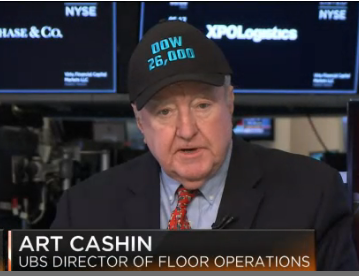Trump on Time
In investment circles the magazine-cover indicator, created by the late Paul Macrae Montgomery, is a contrary indicator essentially telling investors when an investment theme or fad has reached its peak.
It’s similar to the skyscraper index that Mark Thornton of the Mises Institute writes about often and effectively. “Building booms—especially in the context of big city skyscrapers—can be clear signs of dangerous bubbles and hubris.”
A builder of skyscrapers and ego, Donald Trump’s hubris won’t allow him to consider such indicators. After his inauguration, he asserted, “Time magazine—and I have been on their cover, like, 14 or 15 times. I think we have the all-time record in the history of Time magazine.”
He should perhaps ponder that being on the cover of Time has many times been a curse. The magazine named Amazon.com chief Jeff Bezos as Person of the Year in December 1999, marking the top of the dot-com bubble. Person of the Year in 2010, Mark Zuckerberg, saw his shares sink after gracing the cover. In 2005, Time put housing on its cover, and well, you know what happened.
In 2011 the New York Times Magazine cover featured gold as the yellow metal was at the end of its huge run.
The most famous example of magazine covers as indicators is BusinessWeek’s 1979 cover story, The Death of Equities. The cover story coincided with the birth of one of history’s greatest bull markets.
The February edition of Robert Prechter’s Elliott Wave Financial Forecast (EWFF) points out “Trump’s personal history exposes an extreme susceptibility to the vicissitudes of social mood.” The Donald has had a history of “climbing into the limelight near important peaks,” EWFF pointed out in 2004.
His first Time cover was in 1989 with the start of his airline Trump Shuttle and his bid for American Airlines. The airline business crashed later that year, and in 1990 Trump Shuttle defaulted on its debt without coming near a profit and put Trump into bankruptcy court.
EWFF reminds us that in 2007 Trump and the stock market were again rocking and, “In May 2007, when we noticed that the list price for a package of 16 Donald Trump steaks and 24 burgers was $9999, EWFF reckoned that both stocks and Trump were in position for a plunge.”
The Apprentice had resurrected the Donald, but the show lost favor in the bear market of 2009. At the time Trump was being sued by Deutsche Bank AG, the lead lender on the Trump Tower, attempting to collect on Donald’s personal guarantee.
The bull market has carried Trump to the top again as the America’s 45th president. However, EWFF writes, “In our opinion, it is not if Trump will fall from grace but when.” Time’s infatuation with Trump continues, having candidate Trump melting down on the cover last August as the market was swooning and his campaign seemingly cratering and then a fist pumping cover in January as he took charge.
Since the election it’s been a Trump rally in stocks as he has ascended to the throne. “But the positive-cover curse is now in effect,” writes EWFF, “look for a reversal toward negative social mood, a reversal downward in the stock market, and the unraveling of the Trump presidency all to begin before the year is out.”
These Greek tragedies have been with us for centuries. Ludwig von Mises wrote in Human Action that booms produce impoverishment and moral ravages.
It makes people despondent and dispirited. The more optimistic they were under the illusory prosperity of the boom, the greater is their despair and their feeling of frustration. The individual is always ready to ascribe his good luck to his own efficiency and to take it as a well-deserved reward for his talent, application, and probity. But reverses of fortune he always charges to other people, and most of all to the absurdity of social and political institutions. He does not blame the authorities for having fostered the boom. He reviles them for the inevitable collapse.
With markets and men, the mightiest fall, and look for others to blame.







